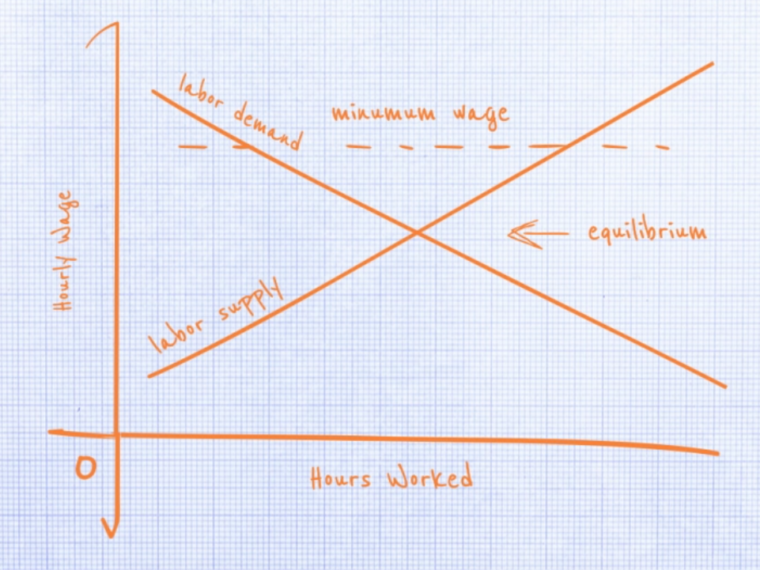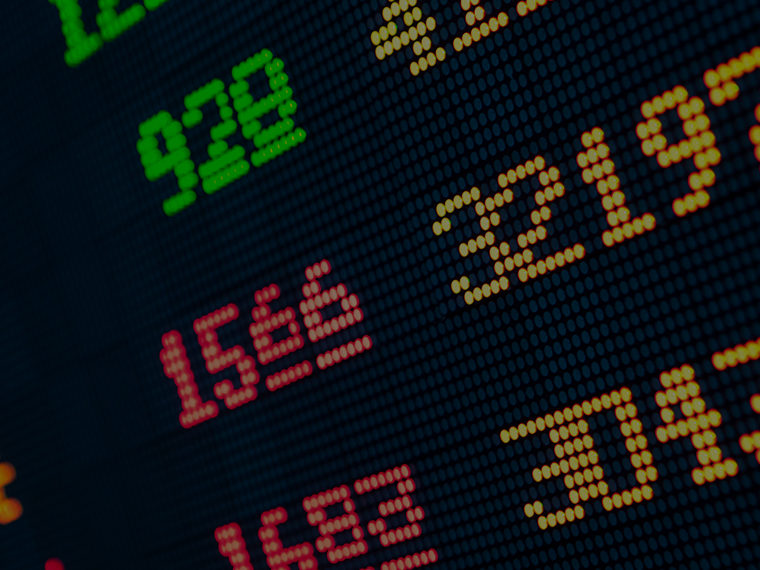The relationship between short- and longer-term moving averages has strong predictive power for share price returns
Short-term stock market data often feel like a whole lot of noise that just gets in the way of good investing decisions. But new research finds that short-term signals from one closely watched market indicator can be highly useful in picking stock winners and avoiding losers.
The indicator is the “moving average,” which charts a stock’s average price over a specific period of time. A one-year moving average chart, for example, is updated every day with the latest price while dropping the first price at the beginning of the one-year period. The idea is to smooth out day-to-day volatility and reveal a stock’s basic trend — up, down or flat.
A working paper by Doron Avramov of IDC Herzliya (Israel), Guy Kaplanski of Bar-Ilan University (Israel) and Avanidhar Subrahmanyam of UCLA Anderson shows that the difference between a stock’s 21-day moving average and its 200-day moving average is a reliable indicator of where the stock is headed in the near term. Overall, it’s bullish when the 21-day average price shoots above the 200-day average. And it’s bearish when the 21-day figure tumbles below the 200-day figure.
Opt In to the Review Monthly Email Update.
Some “momentum” investors have long considered the relationship between short-term and longer-term moving averages an important trend indicator. They even have a term for the point at which a short-term average line (such as the 21-day) rises above a longer-term line (such as the 200-day): the “golden cross.” (And, ominously enough, the chart pattern traced when the 21-day average falls below the 200-day is known as the “death cross.”)
Charting a ‘Golden Cross’ in Moving Averages
In September 2017, when the 21-day moving average of Twitter’s stock price rose above the 200-day average — the so-called Golden Cross — it was followed by a nine-month surge in the shares.

It might seem intuitive that a jump in a stock’s 21-day average price would be bullish, because it suggests there has been a sudden surge of buying. But as Avramov, Kaplanski and Subrahmanyam compared monthly U.S. stock moves from mid-1977 to October 2015 with patterns in the stocks’ moving averages, they were struck by the “strong predictive power” the relationship between the 21-day and 200-day averages had for investor returns.
“We show that the greater the positive distance between a short-run (21-day) and a long-run (200-day) average, the higher the average return” on the stock in the near term, the paper says. Conversely, stocks with the lowest 21-day averages relative to their 200-day averages typically showed the poorest future returns.
The authors also propose an explanation for why strength in the 21-day average versus the 200-day average is reliably bullish for a stock. As they looked at the fundamentals of the stocks whose 21-day averages were well above the 200-day averages, they didn’t find that the shares were riskier compared with all other stocks. If higher risk can’t explain the stocks’ superior returns, then something else might, they said: “misreaction” by investors.
The authors cite prior research (Welch, 2000; Kaustia, Alho & Puttonen, 2008; Kaplanski et al., 2016) that points to investors’ general tendency to forecast future stock performance based on past returns. The paper posits that many investors who watch stock charts use the 200-day average as an “anchor” for where they expect a stock to go.
“Suppose some material news causes a large price move and results in a large departure of the short-term moving average from investors’ prevailing anchor, the long-term moving average,” the paper says. Many investors then are likely to downplay the bullish message of the short-term average because they’re focused on the lower price level of the longer-term average. Over time, that results in continued “underreaction” to bullish news — such as positive earnings reports — with the net effect of stretching out the stock’s uptrend, the paper says.
Featured Faculty
-
Avanidhar Subrahmanyam
Distinguished Professor of Finance; Goldyne and Irwin Hearsh Chair in Money and Banking
-
Ivo Welch
Distinguished Professor of Finance; J. Fred Weston Chair in Finance
About the Research
Avramov, D., Kaplanski, G., & Subrahmanyam, A. (2018). Stock return predictability: New evidence from moving averages of prices and firm fundamentals.
Kaplanski, G., Levy, H., Veld, C., & Veld-Merkoulova, Y.V. (2016). Past returns and the perceived Sharpe ratio. Journal of Economic Behavior and Organization, 123, 149–167. doi: 10.1016/j.jebo.2015.11.010
Kaustia, M., Alho, E., & Puttonen, V. (2008). How much does expertise reduce behavioral biases? The case of anchoring effects in stock return estimates. Financial Management, 37(3), 391–411. doi: 10.1111/j.1755-053X.2008.00018.x
Welch, I. (2000). Views of financial economists on the equity premium and on professional controversies. Journal of Business, 73(4), 501–537. doi: 10.1086/209653






